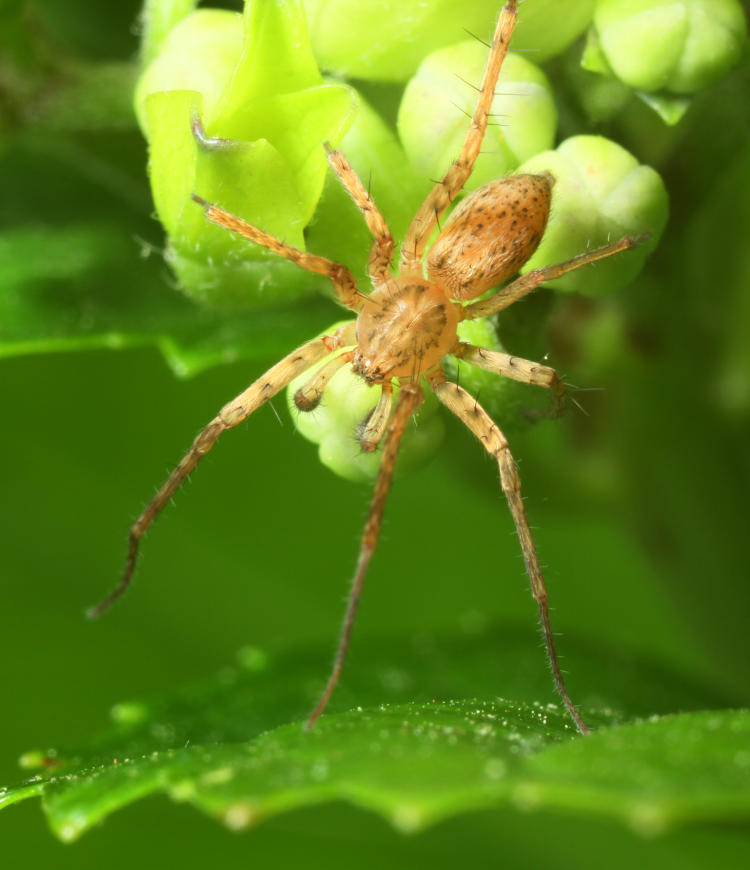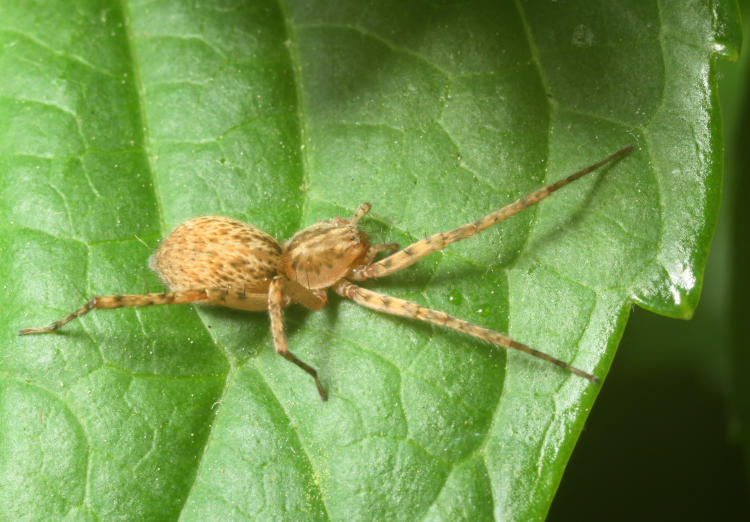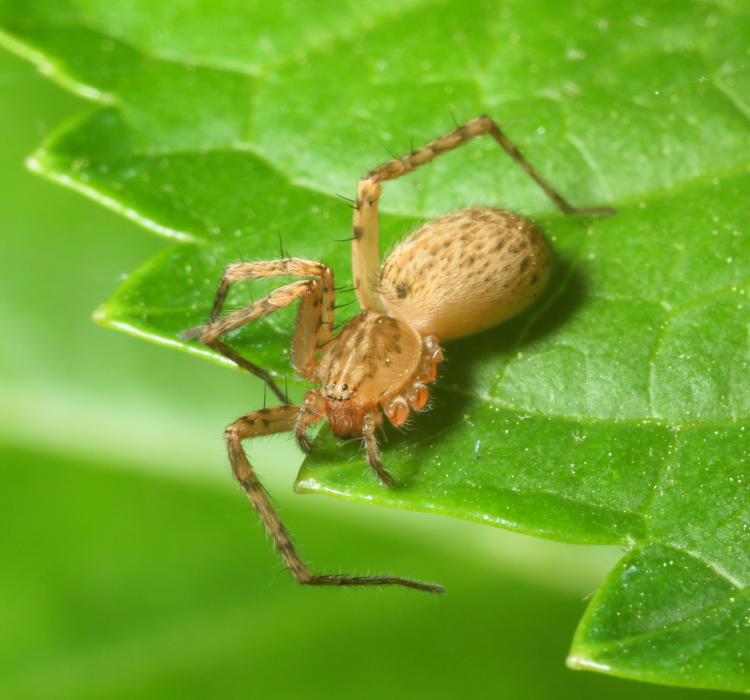I think it has, anyway – I’m not going back to check, and this is what I have to feature regardless. Could have posted this Saturday night, if it hadn’t been for an extended phone call.
Atop a potted hydrangea bush on the back deck I spotted this little guy:

Nothing remarkable, not very big (about 5-7mm body length,) doing nothing in particular. I can only tell you it’s a male, because while the eye pattern seems distinctive, I have yet to identify the species, but it might be one of the long-legged sac spiders. I would have passed him up, but then within a few centimeters on the same bush, I found this:

This one is slightly larger, mostly in the abdomen, and female, but to all appearances it’s the same species. And yes, she’s missing all the legs on the left side. Despite this, she was gamely moving around, certainly not with agility and I couldn’t tell you her handicap in capturing prey, but she was mobile.

How did this happen? Don’t know. There are certainly enough anoles and skinks in the immediate vicinity to have launched an unsuccessful attack (though hours earlier than when I spotted her, since this was well after nightfall and those species would be snoozing by that time) – but the presence of the male was vaguely suspicious. It’s possible that I happened along shortly after a courtship, though whether he would have been responsible for such injuries seems a little unlikely. First off, it’s more often the male that stands at risk, both from unwelcoming females and from being a handy source of sustenance even after successful mating. Seems rather nasty, but nature favors reproduction, and once the male has done his duty, he may do a further duty in ensuring the female has enough food to produce the eggs – that means the genes carry on, which is the whole point. But the second factor making this seem unlikely is that the male injuring the female so distinctly is handicapping his own genes, since her survival chances, even just to producing an egg sac, are greatly diminished. This is not to say that it couldn’t happen, but the instincts for the male would likely be to avoid injury to the female. So, curious. I haven’t see either since, but I also didn’t perform a close examination of the bush since then.
That was enough to provoke me having the macro rig out, so I went looking for other subjects while at the same time checking the status of various plants and egg cases in the yard. Out front, I was near the hearts-a-bustin’ (Euonymus americanus) bush when I watched a large crane fly (Tipulidae) cruising along – “large” not being an adjective in this case but a proper name distinguishing them from other crane flies. It was clearly after the flowers, and soon alighted to feed.

While pleased to get a behavioral shot of a crane fly, even as simple as it is, the flowers drew my attention, because despite having this in the yard since we moved in, I’ve never looked closely at the flowers before – or at least, I don’t recall doing so, but we all know I’m getting ancient and decrepit and had I readers, one might snarkily point out the photos that I’ve featured here in an earlier post. Or I could simply search on the tags below to confirm/deny, but why do that? [See the bit about ‘readers’]

You gotta admit, those are not typical flowers – they look like the product of a bored and inept factory worker just barely following directions. And their physiology is even curious, sprouting as they are with an attendant leaf, in pairs. I should probably look up the details of this plant someday, because this hints that it’s in a whole other class.
I probably should have tried stalking the (large) crane fly some more, just to see if any traces of pollen were visible upon it – get the illustrations while you can, you know? But it was aware of my presence and didn’t like me getting too close, so it soon moved to flowers out of easy viewing. Maybe later.
[A stupid little aside: once, while out stalking treefrogs at night for video, I was standing motionless with all lights out waiting for one nearby to sound off again, when a mating pair of crane flies lighted on a branch immediately alongside my ear. This sound, otherwordly, so close, and out of nowhere in total darkness, was extremely disorienting, and if I ever have the opportunity I will endeavor to record it.]




















































